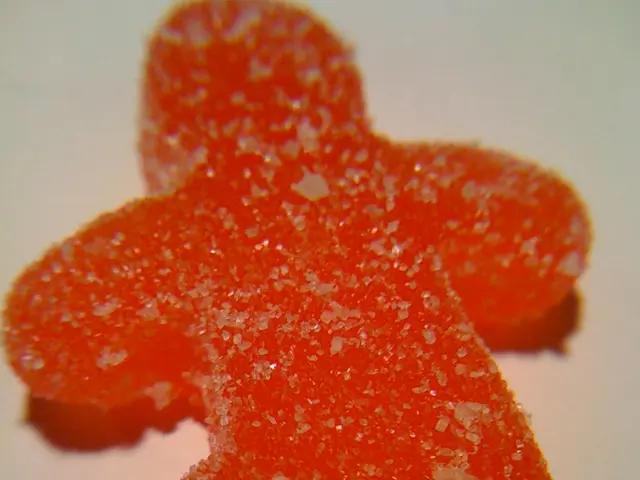Sudden severe rosacea outbreak: Understanding causes, signs, and remedies
Rosacea Fulminans: A Severe, Uncommon Skin Condition
Rosacea Fulminans is a rare and severe inflammatory skin disorder that abruptly manifests in the central part of the face, particularly the chin, cheeks, and nose. The condition is also known as pyoderma faciale and is characterized by flushed, swollen, and painful nodules and pimples that can merge, differing significantly from the symptoms of traditional rosacea or acne.
Although its causation remains elusive, a 2020 review suggests that factors such as inflammatory bowel disease and pregnancy may play a role. Individuals who have previously experienced some form of rosacea may also be more susceptible to this condition.
Common triggers for rosacea fulminans include stress, hormonal variations, and certain medications. Additionally, a 2021 literature review implies that specific dietary factors may exacerbate or even trigger rosacea symptoms, although it should be noted that this information is not exclusively applicable to rosacea fulminans. Potential dietary triggers include spicy foods, alcohol, foods containing cinnamaldehyde, histamine-rich foods and beverages, hot drinks, and eating patterns that vary significantly among those affected.
Treatment for rosacea fulminans may involve prescription acne medication like oral isotretinoin and corticosteroids, administered orally or topically. Combining these medical treatments with lifestyle modifications, such as stress reduction, dietary adjustments, and gentle skin care, may enhance overall symptom management and improve the quality of life for those with the condition.
Individuals are encouraged to consult a dermatologist or other healthcare professional if they experience symptoms beyond typical rosacea or acne, such as substantial facial discomfort, tender nodules, or abscesses. Prompt medical attention can help with proper diagnosis, timely treatment, and possible prevention of complications like scarring and infections. Early intervention can additionally address any emotional distress related to the condition and improve the individual's overall quality of life.
Enrichment Data Note:While emotional stress and hormonal fluctuations are well-documented triggers, other possible factors contributing to rosacea fulminans include alcohol consumption, exposure to halogens like iodides and bromides, high-dose vitamins (particularly B6 and B12), and environmental factors such as temperature extremes, spicy foods, and exposure to certain cosmetics or chemicals. Consulting a healthcare professional is crucial for personalized advice on managing rosacea and identifying specific triggers.
- In dermatology, science continues to reveal additional factors that might trigger rosacea Fulminans, such as alcohol consumption, exposure to specific cosmetics or chemicals, and dietary triggers like spicy foods and high-dose vitamins.
- Although emotional stress and hormonal fluctuations are common triggers, other medical-conditions like pregnancy and inflammatory bowel disease might also play a role in the occurrence of rosacea Fulminans.
- When it comes to managing rosacea Fulminans, health-and-wellness strategies like stress reduction, dietary adjustments, and gentle skin care can complement medical treatments for improved symptom management, better quality of life, and a possible prevention of complications.








